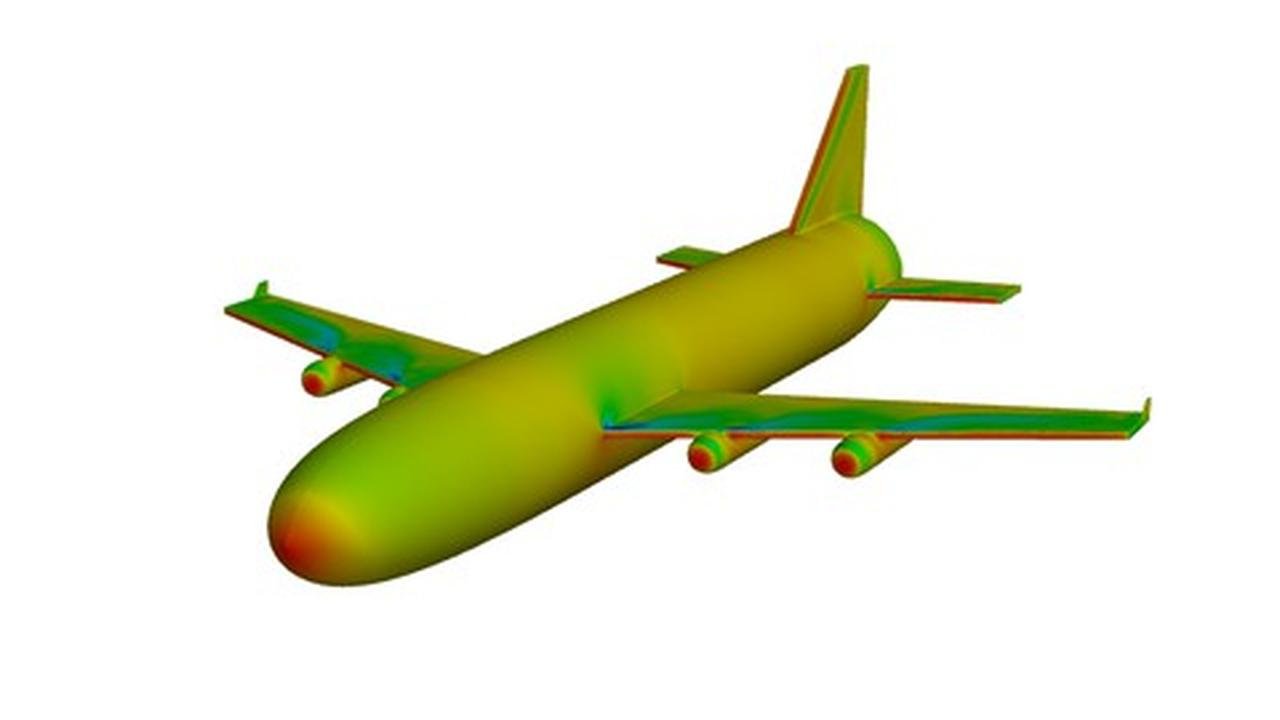Absolute Beginners Guide to CFD simulation in ANSYS
- Home / Sin categoría / Absolute Beginners Guide to CFD simulation in ANSYS

A first course in learning everything in CFD from scratch without any prior knowledge of simulation
In this course you will learn your first CFD simulation from scratch. We will use Boeing 747-400 simplified model to learn important CFD modules in ANSYS workbench.
We will use ANSYS Spaceclaim for geometry cleaning and creating domain for full Aircraft (Boeing 747-400). We will also crate body that will be used as body of influence (BOI) for mesh refinement in wake region.
After that using same geometry and domain, we will cerate hybrid mesh in Workbench Grid generation app. We will create prism layers for capturing boundary layer flow features which are very important for aerodynamic flows such in our case. We will also refine mesh in wake using body of influence (BOI).
This mesh will be then used for setting up compressible flow simulation in ANSYS Fluent. You will provide proper scaling factor, choosing appropriate turbulence model, enabling energy equation, using ideal gas las for density, defining boundary conditions specially at inlet in terms of Mach number, defining reference condition including reference area and reference length. You will also setup defining report definitions for monitoring drag and lift coefficients. Solution will be initialized using hybrid method. We will also setup solver so that we can accelerate solution convergence using «solution steering» option in Fluent. Finally we will hit the calculate option to solve CFD simulation using iterative solver schemes available in ANSYS Fluent.
Once solution is converged based on plots of Cd and CL then we will analyze the flow field including Cp plot, vectors plots, contours plots for pressure and Mach number. We will also draw path lines to see how flow is interacting with Aircraft body. Finally we will find out drag and lift coefficients.
Once more interesting part of this course is that, you will also modify the geometry of whole aircraft by providing angle of attack of 8 deg to full model. You will quickly update the mesh using settings for the pervious case with zero angle of attack (AoA), and run simulation in Fluent. We will again solve the problem in Fluent and discuss the differences in results as comparison to case with zero AoA.

A first course in learning everything in CFD from scratch without any prior knowledge of simulation»
¿Te gustaron los cupones? Tal vez también te guste este otro contenido:
Este curso se encuentra de manera gratuita gracias a un cupón que podrás encontrar aquí abajo.
Toma en cuenta que este tipo de cupones duran por muy poco tiempo.
Si el cupón ya ha expirado podrás adquirir el curso de manera habitual.
Este tipo de cupones duran muy pocas horas, e incluso solo minutos después de haber sido publicados.
Debido a una actualización de Udemy ahora solo existen 1,000 cupones disponibles, NO nos hacemos responsables si el cupón ya venció.
Para obtener el curso con su cupón usa este enlace.